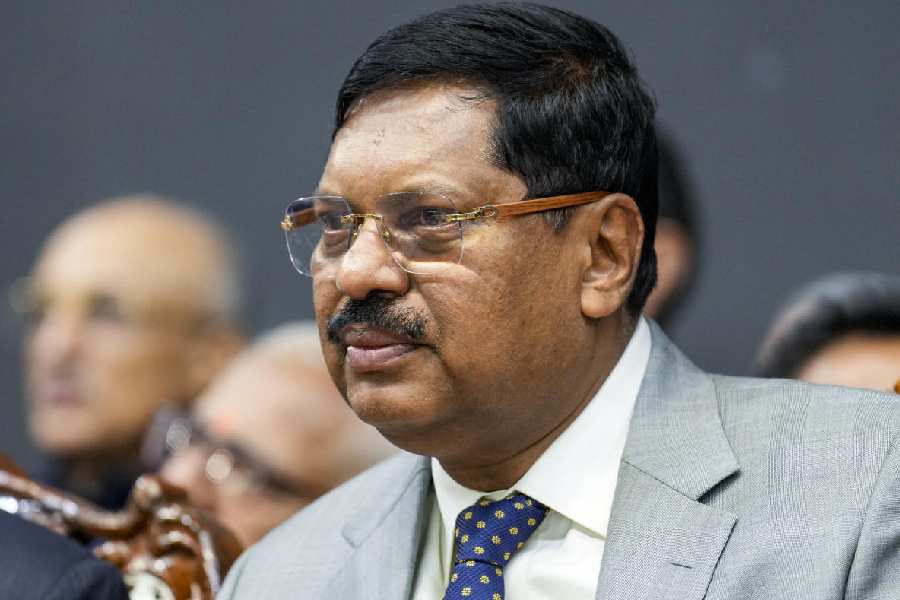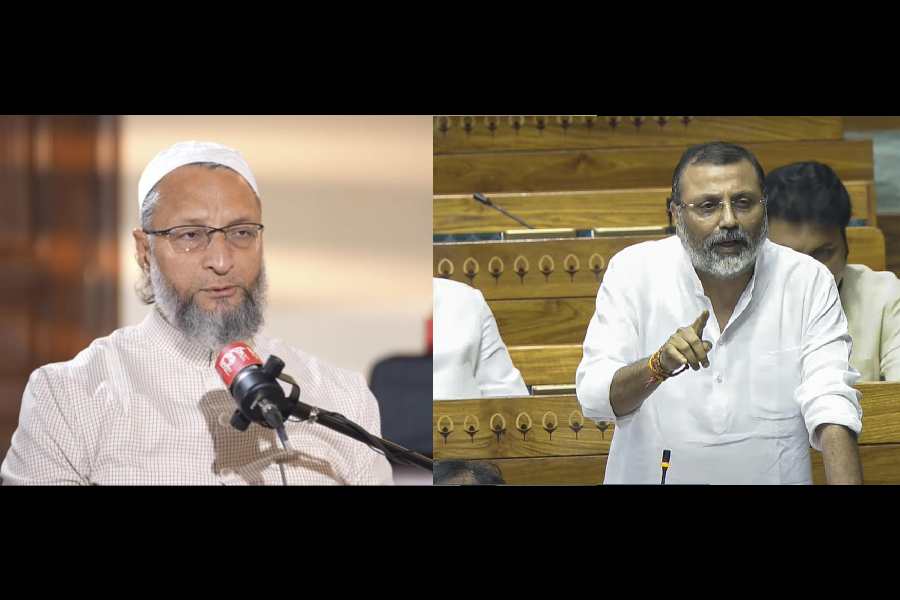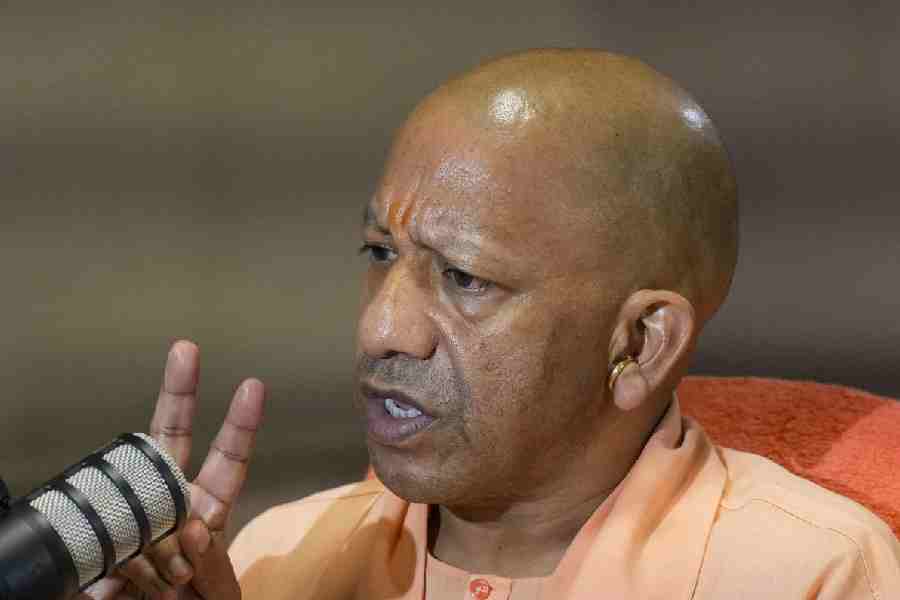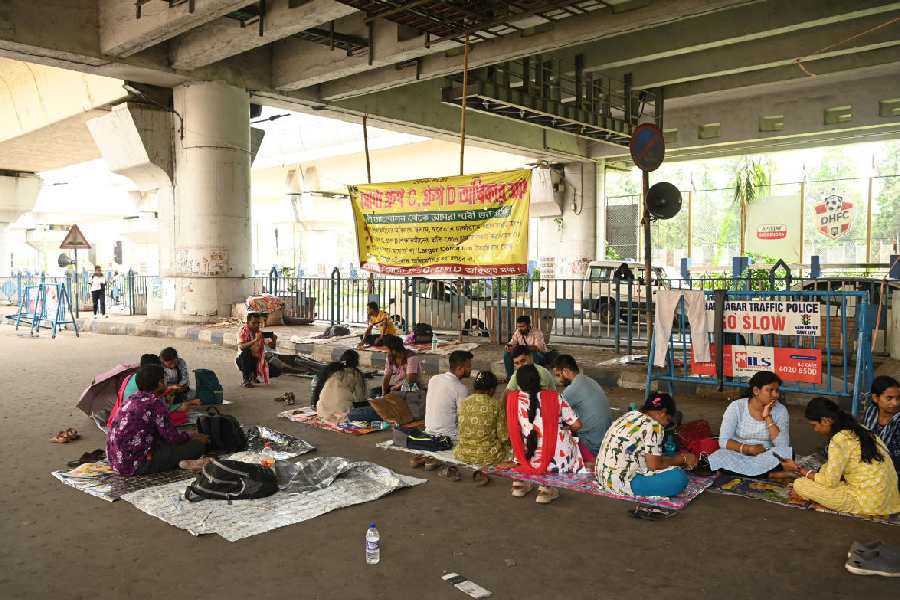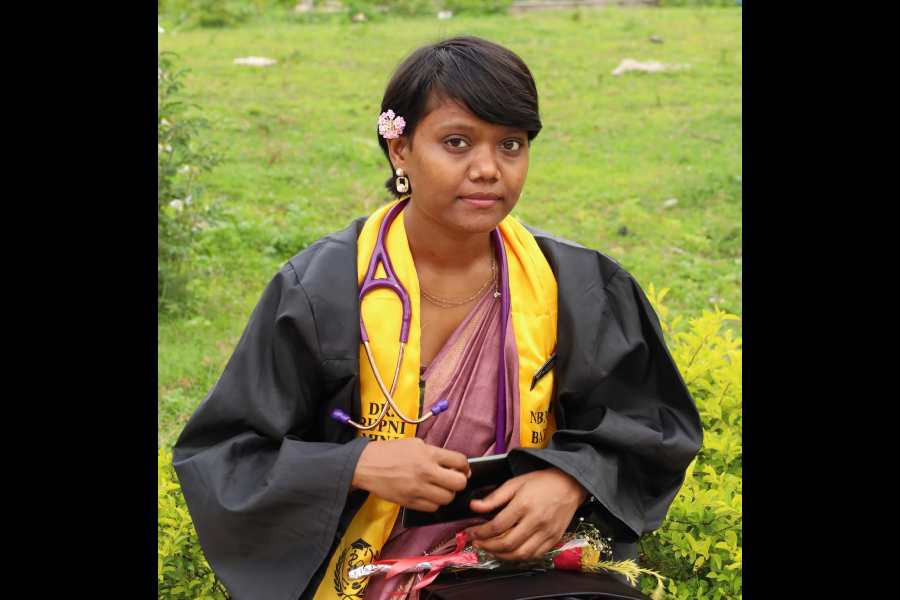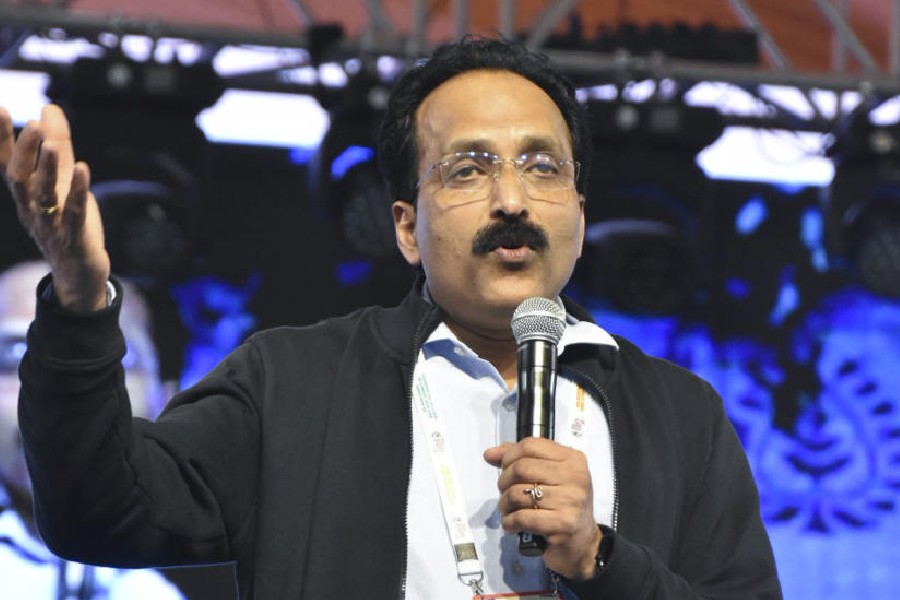|
|
As the curtain lifted in Kalamandir at the stroke of 6.30 pm, the stage offered an expected spectacle. Men in white dhotis and kurtas, women in white saris with a regimented dose of green sat in orderly rows on stage. All of them had slips/sheets of paper, which, one knew, had the poems and lyrics of the songs chosen for the evening written on them.
It was Dakshinee putting up its sixth event of the year to commemorate the 150th birth anniversary of Rabindranath Tagore. Any member of the sizeable audience, familiar with the activities and achievements of the institution dedicated primarily to Tagore’s music and dance, would have known that a fuss-free and pure presentation of the bard’s songs was on the cards.
Discipline is a given in any Dakshinee programme. So is the quality of music. Spearheaded by Sudeb Guhathakurta, the institution is renowned for providing impeccable training in the art of singing Tagore songs. Extracting a certain degree of competence from every performer on stage is a feat it has consistently achieved.
This particular evening’s offering, celebrating Tagore’s engagement with monsoon, however, combined recitation and dance with the music. While the impassioned reading by Saswati Guhathakurta and Debashish Roychoudhury of excerpts culled from Tagore’s poems, prose works and letters anchored the presentation rather well, the dance remained an eyesore all through its length of two hours.
Surely Tagore, said to be the initiator of a contemporary dance style in India, deserved more creativity when it came to the interpretation of his songs through dance. Instead, what one had to sit through was an unpalatable mishmash of clichéd movement patterns that one now knows almost by heart. The use of mudras and movements in a literal translation of Tagore’s often-metaphorical and nearly-always-philosophical lyrics is as hard to swallow as food when it is for some reason stuck in the throat.
The performance reiterated the contention held by many that ‘Rabindra Nritya’ — an expression often uttered with derision for reasons not altogether unjustified — needs to be freed from the shackles of mediocrity. It has to soar to the heights Tagore envisaged for it when he catalyzed the coming together of several dance forms of the world to create a unique movement vocabulary for the dancers of his troupe.
The singing that evening, however, was another story altogether. Living up to their reputation, the students of Dakshinee, past and present, gifted the audience with two lovely hours. The songs and poems, broken up into four parts — the arrival of the clouds, the first shower, heavy rains, and then the end of monsoon — showcased Tagore’s preoccupation with the season.
The choral rendering of “Oi ashe oi oti bhairab harashe” set the right mood by summoning the rain-filled clouds. In the auditorium, one was forced into a willing suspension of disbelief even as a sultry end-of-July dusk breathed unseasonal fire just outside its precincts. The canned sounds of rain and thunder, not to speak of the flashes of lighting, that were repeatedly used during the show, were, however, entirely unnecessary. The evocation of nature might well have been left to Tagore’s poetry and music.
Anindya Narayan Biswas’s “Eki gobhir bani”, Shekhar Gupta’s “Aaj nabin megher” and Shamik Pal’s “Ashadh sandhya ghoniye elo” were unrestrained in their gayaki, allowing the words of the songs, and the notes enshrined in them, to fill up the senses. But it was Rohini Roychoudhury who stole the show in the first part of the programme. Her “Megher porey megh jomechhe” was profoundly atmospheric, conjuring up images of clouds gathering upon clouds. Her rendition of “Aamar je din bheshe gechhey” later in the evening was infused with the same deeply inward-looking pathos. She was definitely the most spectacular performer of the programme.
Debangana Sarkar, a singer of considerable ability, poured a lot of herself into the meditative “Chhaya ghanayichhe bone bone.” The intensely introspective “Aaji jhorer raatey” also found suitable expression in her remarkable gayaki later on in the evening. In “Ami takhan chhilem magan” as well as in “Aami sraban akashey oi”, Shreya Guhathakurta displayed her usual panache, singing the songs in her very own, distinctive style. Among the others, Tatini Rakshit and Nilanjan Chattopadhyay made an impact with their “Aaj srabaner purnimatey.”
The programme came to an end with the choral singing of “Badal dhara holo shara”, but as always, this one too left an impression that would last well beyond the time limit of the programme. The expectation from Dakshinee’s singers had been huge. And it had been met. Yet again.



